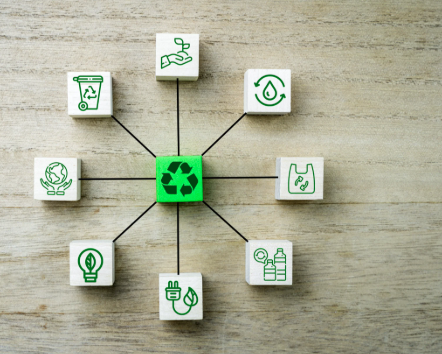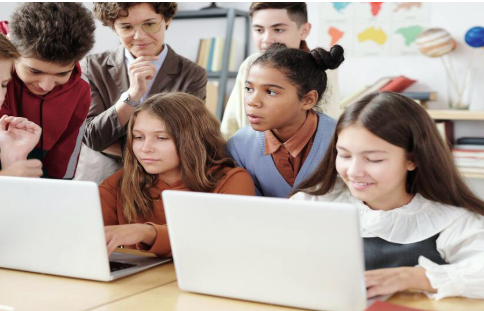Gamification—the use of game-like elements in non-game settings—has found a powerful role in today’s classrooms. Among its many applications, gamified rewards systems are gaining attention as a way to increase student motivation, engagement, and achievement. By incorporating points, badges, leaderboards, and other interactive elements into learning, educators are finding new ways to make education more dynamic and rewarding. When implemented thoughtfully, gamified rewards can support personalized learning, encourage collaboration, and reinforce positive behaviors across diverse learning environments.
What Are Gamified Rewards Systems?
A gamified rewards system applies game design principles to learning activities. These systems may include earning points for completing assignments, unlocking digital badges for mastering skills, or progressing through levels by demonstrating consistent effort. Some programs incorporate friendly competitions through leaderboards, while others focus on personal growth and progress. Gamification doesn’t require a full game—it can be as simple as adding progress bars, achievement checklists, or reward tokens that students can exchange for privileges.
Gamified systems often include both extrinsic and intrinsic rewards. While points and badges offer visible recognition, deeper rewards come from the satisfaction of achievement and mastery. When carefully designed, these systems encourage meaningful engagement rather than superficial compliance.
Benefits of Gamification in the Classroom
Gamified rewards systems help capture student interest by turning everyday tasks into challenges. When learners receive immediate feedback and visible recognition for their efforts, they’re more likely to stay engaged. This is especially useful for building habits around homework completion, classroom participation, and ongoing improvement. Games also add an element of fun that can reduce anxiety and encourage risk-taking in learning.
Another advantage is the flexibility these systems offer. They can be adapted for different age groups, learning styles, and subject areas. Teachers can align rewards with learning outcomes and provide incentives that reinforce meaningful progress rather than superficial success. For example, in a science class, students might earn badges for completing lab experiments, while in language arts, they may collect points for vocabulary mastery or writing challenges.
Gamification can also support differentiation. Students who struggle in traditional settings may find renewed motivation through interactive, visual, and goal-oriented systems. Progress tracking features help all students see how far they’ve come and what they need to do next.
Promoting Intrinsic Motivation
While gamified rewards are often associated with external incentives, well-designed systems can support intrinsic motivation. By setting clear goals, offering choice, and celebrating effort as much as outcomes, educators can encourage students to find joy in learning itself. For example, students may feel empowered by leveling up through their own hard work or seeing their name on a class progress board.
Recognition doesn’t always need to be flashy. Celebrating student milestones, allowing them to mentor peers, or offering personalized messages of encouragement can reinforce internal motivation. The goal is to move students from needing external rewards to developing pride in their accomplishments.
Using Technology to Enhance Gamification
Educational platforms and learning management systems now include built-in gamification tools that allow teachers to track progress and reward achievements digitally. These platforms can provide students with a dashboard view of their learning journey, making goals visible and motivating. Teachers can also customize the system to align with specific course objectives.
Apps and educational games can also extend gamified learning beyond the classroom. Whether through vocabulary challenges, coding quests, or math missions, students can continue learning in a fun and structured way at their own pace. Many tools also support parent involvement, helping families celebrate learning milestones together.
Virtual badges, certificates, and interactive levels allow for recognition without disrupting class flow. Some platforms offer real-time feedback and analytics, enabling educators to adjust instruction based on student performance. This real-time insight makes gamification not only engaging but also highly informative for instructional planning.
Best Practices for Implementation
To be effective, gamified rewards systems must be inclusive and thoughtfully designed. Rewards should be meaningful, attainable, and aligned with learning objectives. It’s important to avoid excessive competition and focus instead on personal improvement and collaborative success. Systems that celebrate group achievements and peer support foster a more positive classroom environment.
Clear communication is also essential. Students should understand how points are earned, how progress is tracked, and how rewards connect to learning goals. Transparency builds trust and helps students engage more confidently.
Teachers should also regularly gather feedback and be willing to adapt the system based on student responses. Offering students choices within the system—such as selecting their avatar, setting personal goals, or choosing preferred rewards—can deepen engagement. Professional development can help educators design, evaluate, and refine their gamification strategies.
Conclusion
Gamified rewards systems offer a creative way to boost motivation and make learning more interactive. By using game-based strategies to support academic goals, educators can foster a positive classroom environment where students are encouraged to grow, challenge themselves, and celebrate their progress. When aligned with thoughtful teaching, gamification becomes a valuable tool for inspiring lifelong learners.
As education continues to evolve, gamification represents a shift toward student-centered instruction. With the right balance of fun, challenge, and recognition, it can enhance both academic outcomes and student well-being—making learning an experience that students look forward to each day.


